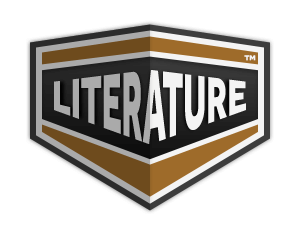A Day on a Selection
"A Day on a Selection" by Henry Lawson is a vivid short story that captures the life and struggles of a rural family in Australia. Set against the backdrop of the harsh bush landscape, the narrative explores themes of hardship, resilience, and the intimate connection between people and their land. Through rich descriptions and a keen observation of character, Lawson highlights the challenges faced by settlers, particularly in relation to their work and the relentless demands of nature. The story serves as a poignant reflection on the Australian experience and the enduring spirit of its people.
The scene is a small New South Wales western selection, the holder whereof is native-English. His wife is native-Irish. Time, Sunday, about 8 a.m. A used-up looking woman comes from the slab-and-bark house, turns her face towards the hillside, and shrieks: “T-o-o-mmay!” No response, and presently she draws a long breath and screams again: “Tomm-a-a-y!” A faint echo comes from far up the siding where Tommy's presence is vaguely indicated by half a dozen cows moving slowly--very slowly--down towards the cow-yard. The woman retires. Ten minutes later she comes out again and screams: “Tommy! “Y-e-e-a-a-s-s!” very passionately and shrilly. “Ain't you goin' to bring those cows down to-day?” “Y-e-e-a-a-s-s-s!--carn't yer see I'm comin'?” A boy is seen to run wildly along the siding and hurl a missile at a feeding cow; the cow runs forward a short distance through the trees, and then stops to graze again while the boy stirs up another milker. An hour goes by. The rising Australian generation is represented by a thin, lanky youth of about fifteen. He is milking. The cow-yard is next the house, and is mostly ankle-deep in slush. The boy drives a dusty, discouraged-looking cow into the bail, and pins her head there; then he gets tackle on to her right hind leg, hauls it back, and makes it fast to the fence. There are eleven cows, but not one of them can be milked out of the bail--chiefly because their teats are sore. The selector does not know what makes the teats sore, but he has an unquestioning faith in a certain ointment, recommended to him by a man who knows less about cows than he does himself, which he causes to be applied at irregular intervals--leaving the mode of application to the discretion of his son. Meanwhile the teats remain sore. Having made the cow fast, the youngster cautiously takes hold of the least sore teat, yanks it suddenly, and dodges the cow's hock. When he gets enough milk to dip his dirty hands in, he moistens the teats, and things go on more smoothly. Now and then he relieves the monotony of his occupation by squirting at the eye of a calf which is dozing in the adjacent pen. Other times he milks into his mouth. Every time the cow kicks, a burr or a grass-seed or a bit of something else falls into the milk, and the boy drowns these things with a well-directed stream--on the principle that what's out of sight is out of mind. Sometimes the boy sticks his head into the cow's side, hangs on by a teat, and dozes, while the bucket, mechanically gripped between his knees, sinks lower and lower till it rests on the ground. Likely as not he'll doze on until his mother's shrill voice startles him with an inquiry as to whether he intends to get that milking done to-day; other times he is roused by the plunging of the cow, or knocked over by a calf which has broken through a defective panel in the pen. In the latter case the youth gets tackle on to the calf, detaches its head from the teat with the heel of his boot, and makes it fast somewhere. Sometimes the cow breaks or loosens the leg-rope and gets her leg into the bucket and then the youth clings desperately to the pail and hopes she'll get her hoof out again without spilling the milk. Sometimes she does, more often she doesn't--it depends on the strength of the boy and the pail and on the strategy of the former. Anyway, the boy will lam the cow down with a jagged yard shovel, let her out, and bail up another. When he considers that he has finished milking he lets the cows out with their calves and carries the milk down to the dairy, where he has a heated argument with his mother, who--judging from the quantity of milk--has reason to believe that he has slummed some of the milkers. This he indignantly denies, telling her she knows very well the cows are going dry. The dairy is built of rotten box bark--though there is plenty of good stringy-bark within easy distance--and the structure looks as if it wants to lie down and is only prevented by three crooked props on the leaning side; more props will soon be needed in the rear for the dairy shows signs of going in that direction. The milk is set in dishes made of kerosene-tins, cut in halves, which are placed on bark shelves fitted round against the walls. The shelves are not level and the dishes are brought to a comparatively horizontal position by means of chips and bits of bark, inserted under the lower side. The milk is covered by soiled sheets of old newspapers supported on sticks laid across the dishes. This protection is necessary, because the box bark in the roof has crumbled away and left fringed holes--also because the fowls roost up there. Sometimes the paper sags, and the cream may have to be scraped off an article on dairy farming. The selector's wife removes the newspapers, and reveals a thick, yellow layer of rich cream, plentifully peppered with dust that has drifted in somehow. She runs a forefinger round the edges of the cream to detach it from the tin, wipes her finger in her mouth, and skims. If the milk and cream are very thick she rolls the cream over like a pancake with her fingers, and lifts it out in sections. The thick milk is poured into a slop-bucket, for the pigs and calves, the dishes are “cleaned”--by the aid of a dipper full of warm water and a rag--and the wife proceeds to set the morning's milk. Tom holds up the doubtful-looking rag that serves as a strainer while his mother pours in the milk. Sometimes the boy's hands get tired and he lets some of the milk run over, and gets into trouble; but it doesn't matter much, for the straining-cloth has several sizable holes in the middle. The door of the dairy faces the dusty road and is off its hinges and has to be propped up. The prop is missing this morning, and Tommy is accused of having been seen chasing old Poley with it at an earlier hour. He never seed the damn prop, never chased no cow with it, and wants to know what's the use of always accusing him. He further complains that he's always blamed for everything. The pole is not forthcoming, and so an old dray is backed against the door to keep it in position. There is more trouble about a cow that is lost, and hasn't been milked for two days. The boy takes the cows up to the paddock sliprails and lets the top rail down: the lower rail fits rather tightly and some exertion is required to free it, so he makes the animals jump that one. Then he “poddies”--hand-feeds--the calves which have been weaned too early. He carries the skim-milk to the yard in a bucket made out of an oil-drum--sometimes a kerosene-tin--seizes a calf by the nape of the neck with his left hand, inserts the dirty forefinger of his right into its mouth, and shoves its head down into the milk. The calf sucks, thinking it has a teat, and pretty soon it butts violently--as calves do to remind their mothers to let down the milk--and the boy's wrist gets barked against the jagged edge of the bucket. He welts that calf in the jaw, kicks it in the stomach, tries to smother it with its nose in the
Translation
Translate and read this book in other languages:
Select another language:
- - Select -
- 简体中文 (Chinese - Simplified)
- 繁體中文 (Chinese - Traditional)
- Español (Spanish)
- Esperanto (Esperanto)
- 日本語 (Japanese)
- Português (Portuguese)
- Deutsch (German)
- العربية (Arabic)
- Français (French)
- Русский (Russian)
- ಕನ್ನಡ (Kannada)
- 한국어 (Korean)
- עברית (Hebrew)
- Gaeilge (Irish)
- Українська (Ukrainian)
- اردو (Urdu)
- Magyar (Hungarian)
- मानक हिन्दी (Hindi)
- Indonesia (Indonesian)
- Italiano (Italian)
- தமிழ் (Tamil)
- Türkçe (Turkish)
- తెలుగు (Telugu)
- ภาษาไทย (Thai)
- Tiếng Việt (Vietnamese)
- Čeština (Czech)
- Polski (Polish)
- Bahasa Indonesia (Indonesian)
- Românește (Romanian)
- Nederlands (Dutch)
- Ελληνικά (Greek)
- Latinum (Latin)
- Svenska (Swedish)
- Dansk (Danish)
- Suomi (Finnish)
- فارسی (Persian)
- ייִדיש (Yiddish)
- հայերեն (Armenian)
- Norsk (Norwegian)
- English (English)
Citation
Use the citation below to add this book to your bibliography:
Style:MLAChicagoAPA
"A Day on a Selection Books." Literature.com. STANDS4 LLC, 2025. Web. 23 Feb. 2025. <https://www.literature.com/book/a_day_on_a_selection_5467>.








Discuss this A Day on a Selection book with the community:
Report Comment
We're doing our best to make sure our content is useful, accurate and safe.
If by any chance you spot an inappropriate comment while navigating through our website please use this form to let us know, and we'll take care of it shortly.
Attachment
You need to be logged in to favorite.
Log In